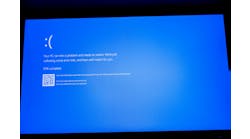Ransomware attacks across all sectors continued to increase rapidly during the first nine months of 2016, with most organizations getting infected because an employee clicks on a malicious attachment or a bad link in an email message, according to Beazley Breach Insights.
And within healthcare organizations, breaches caused by unintended disclosure represented 40 percent of all industry incidents in 2016 to date, a sharp rise from 28 percent in the first three quarters of 2015. This is connected to the large amount of information shared between organizations in this industry.
Further, 19 percent of healthcare breaches were caused by hacking or malware in 2016, down from 28 percent in 2015, according to the report from Beazley, a provider of data breach response insurance. Other causes of breaches in healthcare organizations include: insider (12 percent); physical loss (12 percent); and portable device (9 percent).
Meanwhile, another survey from endpoint security company SentinelOne found that in the last 12 months, 50 percent of organizations have responded to a ransomware campaign, with 85 percent indicating that they’ve suffered from three or more attacks. According to this survey, in response to ransomware attacks, 70 percent of businesses globally have increased IT security spending, and 65 percent reported that they are changing their security strategies to focus on mitigation. Fifty-two percent also agreed that their organizations have lost faith in traditional cybersecurity, such as antivirus.
As a result, more than half of organizations have lost faith in traditional cybersecurity like antivirus, while over a third feel helpless to defend their organization from new forms of ransomware. An additional 68 percent of respondents agreed that traditional cybersecurity techniques are unable to protect organizations from the next generation of malware. Despite this, companies are still willing to assume responsibility for breaches—only 42 percent would demand answers from their IT security vendors, according to the survey.

